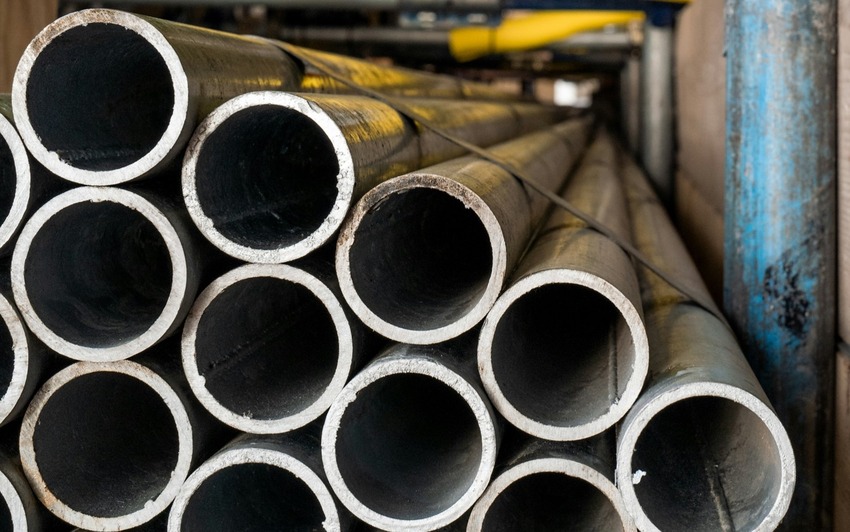The Perpetual Motion Economy?
Tuesday, 11 March, 2025
Share

Can we engineer our way to sustainable growth, asks Dr Kevin Roche from the UCD School of Mechanical and Materials, or does the ideal of the circular economy defy the Second Law of Thermodynamics?
(opens in a new window)“Climate change is an engineering problem and it has engineering solutions.” So said Rex Tillerson, former CEO of ExxonMobil, and so agreed 80% of a group of engineering students I asked recently. I must admit I was surprised by the landslide victory; despite the fact that I think I would have agreed when I was in their position. It seems perfectly reasonable; so much of engineering is about finding better and more efficient ways of doing things, so surely that will translate to reductions in emissions and resource use that we need…right?
My experience in industrial R&D focused largely on manufacturing process improvements, and more recently in academic research into plastics recycling technology and the circular economy more generally, has led me to a different conclusion. The prevailing approach to the circular economy and climate change – the idea that we can somehow eliminate our emissions and resource extraction while the economy grows on indefinitely - is dependent on breaking some unbreakable Laws.
In engineering there are laws, and there are Laws.
The ‘small’ laws are by no means unimportant. They include everything from fundamental protections like duty of care and professional negligence, to laws designed to drive positive change like the single use plastics directive or mandatory recycling targets. What links these laws is that they are made by people; they are what they are only because we say so, they can be changed, they are open to interpretation, and are breakable (though there may be consequences).
The Laws are a different story. These are the Laws of Nature and they aren’t changing for anyone. In my recycling research there is one Law that keeps coming up and pulls my focus more and more from looking at specific technologies to a much more systemic view of circularity - the Second Law of Thermodynamics.
The Second Law is not the easiest thing to describe but we nevertheless intuitively understand it quite well; my five-year-old knows he can mix blue and yellow paint to get green, but that there’s no point trying to separate the green back into blue and yellow again. You’ll find more precise technical definitions than this, but my favourite description is from the (opens in a new window)song of the same name by Muse:
“All natural and technological processes proceed in such a way that the availability of the remaining energy decreases
In all energy exchanges, if no energy enters or leaves an isolated system the entropy of that system increases
Energy continuously flows from being concentrated to becoming dispersed, spread out, wasted and useless
New energy cannot be created and high grade energy is being destroyed”- The 2nd Law: Unsustainable, Muse
I like it for a few reasons: I think it captures the importance of concentrated energy very well; I like the song; and I find something fascinating in the fact that this Law is absolutely accepted scientifically on the one hand and so eloquently captured in popular culture on the other, yet seems completely ignored in our highest level decision-making systems.
Listen to political and business leaders talking about the circular economy and you will regularly hear that we are going to ‘decouple economic growth from material consumption / emissions / environmental impact’ or something to that effect. In the circular economy, resources will flow round and round, forever powering economic growth. This is the perpetual motion machine of sustainable growth – a machine that defies the Laws of Thermodynamics to somehow create something from nothing and work forever without consuming anything.

Sustainable growth challenge: fill this glass using only the water that's already in it
The Second Law separates fantasy from reality in the circular economy and means that every turn of the wheel must come with some loss. With the recent introduction of the (opens in a new window)Re-Turn scheme in Ireland and the focus on plastic bottles and aluminium cans, one claim I have come across quite frequently is the ‘100% infinitely recyclable’ nature of aluminium. In theory, yes, but in practice it’s more like that green paint I mentioned. In every cycle the aluminium becomes a little more mixed with other elements that can’t be separated any more easily than the blue and yellow paint. Theoretically you might be able to do it, but that is an extremely difficult and energy intensive battle against entropy, so in practice the contaminated recyclate is topped up with newly mined and refined aluminium to achieve the precise composition and properties required before it can go through the manufacturing process again to become a new can [1].
The result is that 70% recycled content in an aluminium can is fairly typical and the demand for virgin aluminium is forecast to grow and grow. The specifics will vary for PET bottles and other materials but the general rule stays the same; the closer we get to 100% recycling, the harder and more energy intensive the process becomes. The Re-Turn scheme took in over 980 million containers in its first year of operation [2] and the benefit of such schemes to both the quantity and quality of recycled material should not be underestimated, but there is no technological solution that will make such colossal use of materials sustainable, let alone enable never-ending growth.
.png)
Even if unrealistic 100% recycling rates are assumed, the demand for virgin aluminium is projected to continue increasing significantly due to growth in overall demand. Figure source: [3].
There’s another reason that 70% recycled content is so low, and the circular economy cannot sustain constant growth - the Law of Conservation of Mass. To reach 100% circularity material must be recycled from old products just as fast as it is made into new products. Continuous growth, however, requires more and more material in use at any one time. In this scenario we must put more into the system than we take out, and it is physically impossible to have enough recycled material available to make enough new products to meet demand. Sustainable growth is like filling a half full glass using only the water that’s already in it.
In theory, with enough additional renewable energy input to separate and repurify materials we could reach very high circularity, and the Sun has a good 5 billion years left of freely providing far more energy than we currently use. Harnessing this, however, means producing a lot of things like solar panels, wind turbines, electric vehicles, batteries, transmission systems... These need a host of critical materials that do not shine down constantly from space and must be mined, refined, transported, and formed. Mining is not my area of expertise but as a member of the Institute of Materials, Minerals, and Mining I pick up some insights into the industry. A recent article reports industry forecasts [4] that we will need to mine more in the next 30 years than we have in the past 70,000. Since we don’t have the spare renewable energy capacity to power all that mining and processing, that energy will come from non-renewable sources.
.png)
An idealised vision of the circular economy versus one that accounts for demands of growth
Engineering cannot provide solutions to climate change, but it does provide choices. As our cars become more fuel efficient we choose whether to use less fuel or to spend more time in the car. As computers become smaller, faster, and cheaper we choose whether to save those critical materials for when they’re really needed, or to build vast datacentres to house more and more ‘content’ and power AI to replace humans in more and more roles. Individually many of us may not support these choices, and intuitively we may recognise the problems, but collectively we continue to choose badly almost every time.
Rather than face the difficult task of changing our ‘small’ laws in ways that could move us quite rapidly towards better and more secure futures (a conclusion for which there is significant and growing evidence [5, 6]), successive decision makers have chosen to chase the impossible task of changing the Laws of Nature in the name of perpetual growth. This doesn’t mean I will stop trying to develop and support recycling technologies, but it does mean that I, and any of my students who will listen, will have to chase this problem far beyond engineering to find any complete solution.
About the author
(opens in a new window)Dr Kevin Roche is an assistant professor in the UCD School of Mechanical and Materials Engineering. Kevin works to reduce the environmental damage caused by our use of materials and support sustainable manufacturing practices. This involves developing new technologies and processes that enable increased recycling rates or reduced raw material use, and improving efficiency during manufacturing and throughout the product life cycle.
References and further reading
- Raabe, D., et al., Making sustainable aluminum by recycling scrap: The science of “dirty” alloys. Progress in Materials Science, 2022. 128: p. 100947.
- ‘Many happy returns!’ – Minister marks first birthday of the Deposit Return Scheme. 2025 10/02/2025]; Available from: (opens in a new window)https://re-turn.ie/many-happy-returns-minister-marks-first-birthday-of-the-deposit-return-scheme/.
- Hund, K.L., et al., Minerals for Climate Action: The Mineral Intensity of the Clean Energy Transition. 2023, World Bank Group: Washington D.C.
- Brinded, A., Risks and opportunities for the mining industry in 2025, in Materials World. 2024, Institute of Materials Minerals and Mining: London.
- Raworth, K., Doughnut economics: seven ways to think like a 21st century economist. 2017, White River Junction, Vermont: Chelsea Green Publishing.
- Hickel, J., K. Klu, and R. Read, Less is more: how degrowth will save the world. 2021, London, England: Windmill.